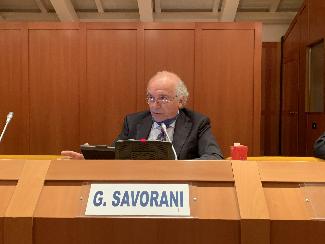
Italian ceramics
The Italian ceramic tile industry reported a 4% drop in turnover in 2020. Sales grew by 9% in the first quarter of 2021. Sharp increases in the cost of energy, finished product packaging and freight rates to the US are causing serious concern. The Emilia Romagna regional government approves the first Ceramics Technical Institute
During its Annual General Meeting held this afternoon, Confindustria Ceramica presented its 2020 statistical surveys for companies producing ceramic tiles and slabs, sanitaryware, porcelain and tableware, refractory materials, technical ceramics and bricks and roof tiles. There are a total of 271 companies operating in the sector in Italy with 26,750 direct employees and a turnover of 6.2 billion euros, as well as a number of companies owned by Italian groups that operate in Europe and North America.
As well as electing the new Board of Directors, the Meeting heard reports from Giuseppe Schirone (Prometeia) on the economic situation, Davide Tabarelli (Nomisma Energia) on the ETS and Antonio Bruzzone (BolognaFiere) on the re-opening of trade fair activities.
Ceramic tiles produced in Italy.
There were a total of 133 ceramic tile companies operating in Italy in 2020 with a production of 344.3 million square metres (-14.1%) and a workforce of 18,747 employees. Total sales amounted to 391 million square metres (-3.9%), a volume that was achieved in part by selling products from the finished goods warehouse. Sales in Italy dropped to 73.3 million square metres (-12.2%), while exports saw a smaller fall in volumes (-1.8%) to 317.7 million square metres. The total turnover of Italian tile companies amounted to 5.13 billion euros (-3.9%), of which 4.4 billion euros came from exports (-2.2%; 86% share of turnover) and 720 million euros from sales in Italy.
The first quarter of 2021 also brought positive results, with turnover up 9% compared to 2020 thanks to growth in both the Italian market (+18.9%) and exports (+7.2%). This represents a real improvement of around 7% overall compared to Q1 2019.
Ceramic sanitaryware.
There were a total of 30 ceramic sanitaryware manufacturers operating in Italy in 2020, including 27 located in the Civita Castellana cluster in the province of Viterbo. The industry employed a total direct workforce of 2,652 people nationwide and produced 3.1 million pieces. Turnover totalled 306.2 million euros, including 137.8 million euros from exports (45% of the total).
The refractory materials industry.
The 31 refractory materials producers employed 1,704 people (1.7% fewer than in 2019) and produced a total of 276,000 tons (-23.0%). Total turnover fell with respect to the previous year (319 million euros, -21.6%) as a combined result of a 30.5% fall in domestic sales and an 11.5% decline in exports.
Ceramic tableware.
The 9 industrial-level Italian companies operating in the sector employed a total of 644 people and reported a production of 8,400 tons (-27.6%) and sales of 7,800 tons of finished product. Domestic sales made up 80% of the total. Total 2020 turnover amounted to 32.8 million euros (-34.1%), about 70% of which was generated in Italy.
The brick and roof tile sector
The Italian brick and tile industry consists of 68 companies with a workforce of 3,000 employees and revenue of 380 million euros in 2020, mainly generated in the Italian market. Production totalled 4.0 million tons.
Statement by Giovanni Savorani, Chairman of Confindustria Ceramica
“During the second half of last year we recovered much of the sales slump caused by the lockdown, a positive trend that has already enabled us to exceed pre-pandemic levels in the first quarter of 2021. Global attention to housing coupled with a focus on the healthiness, sustainability and durability of homes has driven up consumption of ceramic tiles all over the world. The incentives offered by the Recovery Plan and the simplification of bureaucracy can make this growth lasting and consistent.
“In our sector too, however, the recovery of the world economy has led to very sharp and sudden increases in the costs of production factors, such as pallets, plastic and cardboard for packaging, and sea freight, and we have sometimes found ourselves unable to ship due to the unavailability of containers. The increase in the cost of natural gas is twofold: in addition to the rise in the cost of the raw material itself (from 8 euros last year to the current price of 20 euro), we are also facing an increase in CO2 costs determined by the ETS system, from 15 euros per ton 10 months ago to around 50 euros now, largely due to financial speculation. The Italian ceramic sector needs a reformulation of the ETS mechanism as well as inclusion among the sectors that can benefit from offsetting indirect costs.
“The training of young people is crucial for the future competitiveness of our industry. The Emilia Romagna regional government recently approved the first Ceramics ITS (Technical Institutes) programme with courses due to begin in November, the same period as the lessons of the 2nd edition of the Second Level Master’s Degree Course organised in collaboration with the University of Modena and Reggio Emilia, the University of Bologna and Federchimica Ceramicolor. Added to this is a two million euro investment for the construction of the new Centro Ceramico branch in Sassuolo. A joint Centro Ceramico - DICAM laboratory will also be set up as part of the Department of Civil, Chemical, Environmental and Materials Engineering at the University of Bologna.”